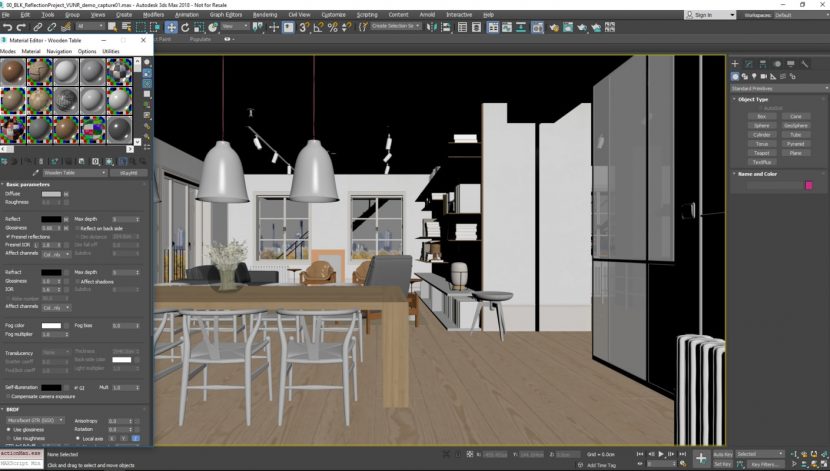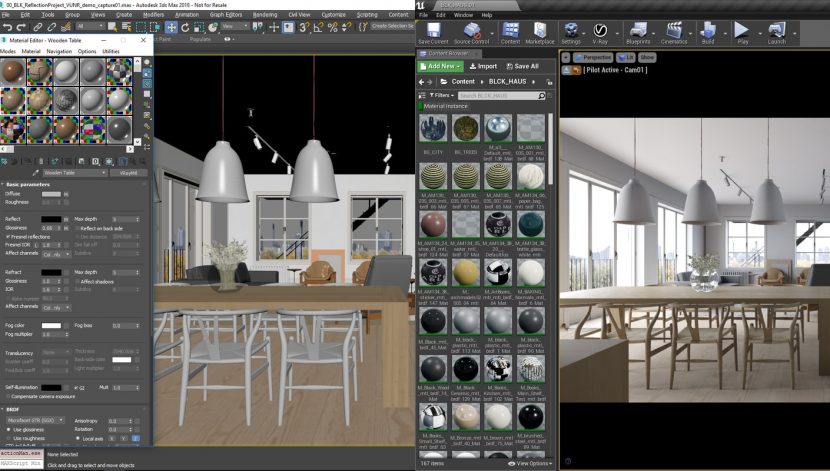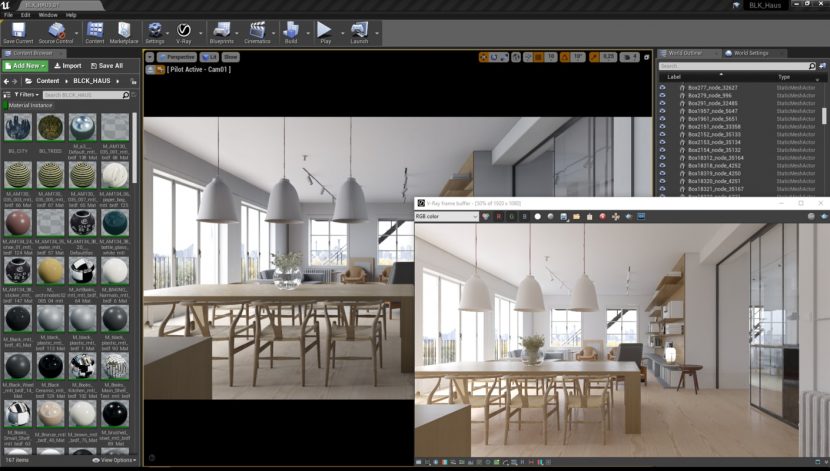GTC: V-Ray GPU rendering
At this week’s GPU Technology Conference (GTC) Chaos Group also debuted its new fast V-Ray GPU rendering architecture, effectively doubling the speed of production rendering for film, broadcast and design artists. The new architecture is a redesign of V-Ray’s kernel structure, ensuring a dual-blend of high-performance speed and accuracy.
The improvements are so significant that V-Ray RT has been renamed V-Ray GPU, establishing the latter as a professional production renderer, now capable of supporting volumetrics, advanced shading and other smart tech coming to V-Ray Next.
Current tests have V-Ray GPU running 80 percent faster on the NVIDIA’s TITAN V, a remarkable gain from previous benchmarks on the TITAN Xp, and up to 10-15x faster than an Intel Core i7-7700K, with the same high level of accuracy across interactive and production renders.
“V-Ray GPU might be the biggest speed leap we’ve ever made,” said Blagovest Taskov, V-Ray GPU lead developer at Chaos Group. “Redesigning V-Ray GPU to be modular makes it much easier for us to exploit the latest GPU architectures and to add functionality without impacting performance. With our greatly expanded feature set, V-Ray GPU can be used in many more production scenarios, from big-budget films to data-heavy architecture projects, while providing more speed than ever before.” Representing over two years of dedicated R&D, V-Ray GPU builds on nine years of GPU-driven development in V-Ray. New gains for production artists include:
- Volume Rendering – Fog, smoke and fire can be rendered with the speed of V-Ray GPU. Compatible with V-Ray Volume Grid which supports OpenVDB, Field3D and Phoenix FD volume caches.
- Adaptive Dome Light – Cleaner image-based lighting is now faster and even more accurate.
- V-Ray Denoising – GPU-accelerated denoising across render elements and animations.
- NVIDIA AI Denoiser – Fast, real-time denoising based on NVIDIA OptiX AI-accelerated denoising technology.
- Interface Support – Instant filtering of GPU-supported features always lets artists know what’s available in V-Ray GPU (starting within 3ds Max).
V-Ray GPU will be made available as part of the next update of V-Ray Next for 3ds Max.
V-Ray for Unreal.
Chaos Group has introduced the beta for V-Ray for Unreal, joining real-time and ray tracing in a single, unified pipeline. Instead of doing redoing work, artists and designers can now bring V-Ray scenes directly into the Unreal Editor, facilitating the fast and simple creation of immersive experiences.
V-Ray for Unreal also introduces their ray-tracer designed for UE4, that allows true photorealistic rendering from the powerful game engine. While Epic Games showed real time ray tracing at GDC last week, this was a technology showing and designed around real time ray-tracing applications. (Link to that story below). V-Ray for Unreal aims for maximum quality rather than real time performance.
https://www.fxguide.com/featured/epics-unreal-real-time-ray-tracing-gdc-day2-part-2/
The GDC demo was a technology showing of something that is not immediately shipping nor scheduled for an imminent point release. By contrast, this new offering from Chaos Group is a product now entering into Beta.
This pathway will become even more powerful as Epic looks to offer animation alembic exports from UE4.
The rise in popularity of real-time applications for configurators, design reviews, virtual production and VR has presented an opportunity to add realistic ray tracing rendering to this emerging space. In the past, bridging the two has been challenging, requiring users familiar with 3ds Max and SketchUp to recreate their key design choices like lighting and materials in UE4.
“Transitioning from offline to real-time used to be a lot of work, prohibitively so for most of our users,” said Simeon Balabanov, V-Ray for Unreal Product Manager at Chaos Group. “Now with V-Ray for Unreal, users can not only build assets in a familiar way, but they can bring them into real-time without losing the ability to render out ray-traced versions later. It’s a big change.”

V-Ray for Unreal is designed to act as a natural extension of the visualization workflow. Using the V-Ray for Unreal importer, artists can bring their V-Ray scene file into the game engine, automatically converting lights and materials into their real-time equivalents. V-Ray for Unreal also maintains a smart connection to the original V-Ray materials to ensure the highest fidelity renders.
At render time, V-Ray leverages the combined power of GPUs and CPUs for extremely fast ray tracing.
“As an architectural visualization studio, we create a wide range of visuals from ray traced imagery and animation, to fully-immersive, interactive VR experiences,” said Jackson Doherty, VR Engineer at Kilograph. “Until now, there’s been a great divide between the two worlds. Now with V-Ray for Unreal, we can offer our full suite of services using a single, simplified workflow. And all of our artists can jump in, which is a massive benefit for us.”

V-Ray for Unreal can also be applied to CAD workflows, bringing the power of V-Ray to new users. As geometry is imported from programs like Solidworks, designers will be able to apply V-Ray lighting and materials to their assets, preparing them for a photorealistic result. The V-Ray for Unreal beta is open to any artists or designers.



